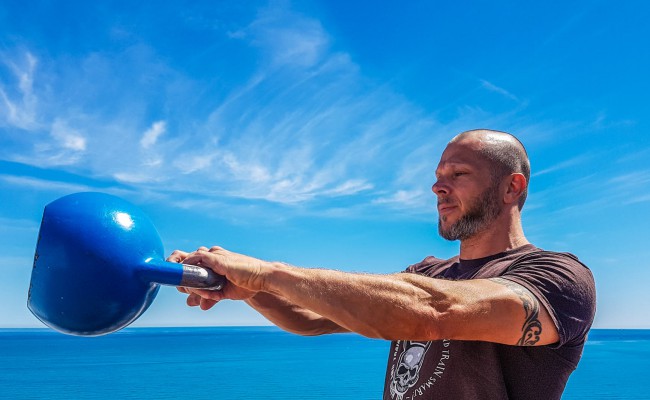In the swing: kettlebell exercises to sweat for

10 July 2019
Kettlebells can prove beneficial for a number of reasons. The kettlebell was primarily used to weigh crops in the 18th century before being used by circus strongmen a century later. Nowadays, kettlebells are used for explosive workouts that combine flexibility, strength training and cardiovascular fitness. The numerous benefits of such workouts extend to endurance, weight loss and strength gain; hence, they are good for strengthening your core and improving flexibility.
Kettlebells can prove beneficial for a number of reasons. The kettlebell was primarily used to weigh crops in the 18th century before being used by circus strongmen a century later.
Nowadays, kettlebells are used for explosive workouts that combine flexibility, strength training and cardiovascular fitness. The numerous benefits of such workouts extend to endurance, weight loss and strength gain; hence, they are good for strengthening your core and improving flexibility.
The swing
The foundation of all kettlebell moves, the swing is considered the most powerful owing to its full-body power, high level of cardiovascular conditioning, and extreme fat loss. It is one of the most effective exercises when executed properly.
The breathing techniques, hip hinging and hip power required make it an incredibly powerful exercise, as you’re combining strength training and cardiovascular endurance into one efficient move.
To perform the swing, stand up straight with your feet slightly wider than shoulder-width apart. Grasp the kettlebell with both hands, with your palms facing towards you and your arms in front of your body. Lower your body by bending your knees slightly and driving your hips back. Thrust your hips forwards and project the kettlebell with straight arms to shoulder height. Here, keep your glutes and core engaged, and control the swing back down.
The Turkish get-up
This move is a slow, deliberate exercise that has been around for hundreds of years. The Turkish get-up will help you not only reach higher-level exercises but also help with functional tasks, as it teaches you to move fluidly and requires skilled movement.
Of the three exercises discussed, this is perhaps the most complimented. If you are feeling a little overwhelmed with the exercises, you could always try heading to a boot camp. Fitness bootcamps will acquaint you with exercises so you’re able to do them in the gym yourself.
Lie flat on the floor, and place the kettlebell a foot away from your right arm. Grab the weight with two bent arms before rolling back onto your back. Let go of the weight with your left hand and bench press with your right. Bend your right knee and place your foot firmly on the ground. Lift your right shoulder, and support your weight with your left elbow. Use that elbow to help yourself stand up, before holding the position and repeating the move in reverse order.
Goblet squat
The goblet squat is one of the many variations of the fundamental movement pattern that is the squat. The goblet squad is far from just a leg exercise, but instead a total-body workout that offers greater mobility, i.e. the ability to easily move so that you can train with a heavier load in a safe manner. It should be noted that for maximum leg strength and development, the barbell squat is most beneficial squat, though the goblet squat is always a nice addition.
Stand up straight, hold the kettlebell with both hands and in front of your chest, and keep your elbows close to the body. Squat by driving your heels into the ground and push the hips back until the thighs are parallel to the ground – repeat this for three sets of ten reps.











